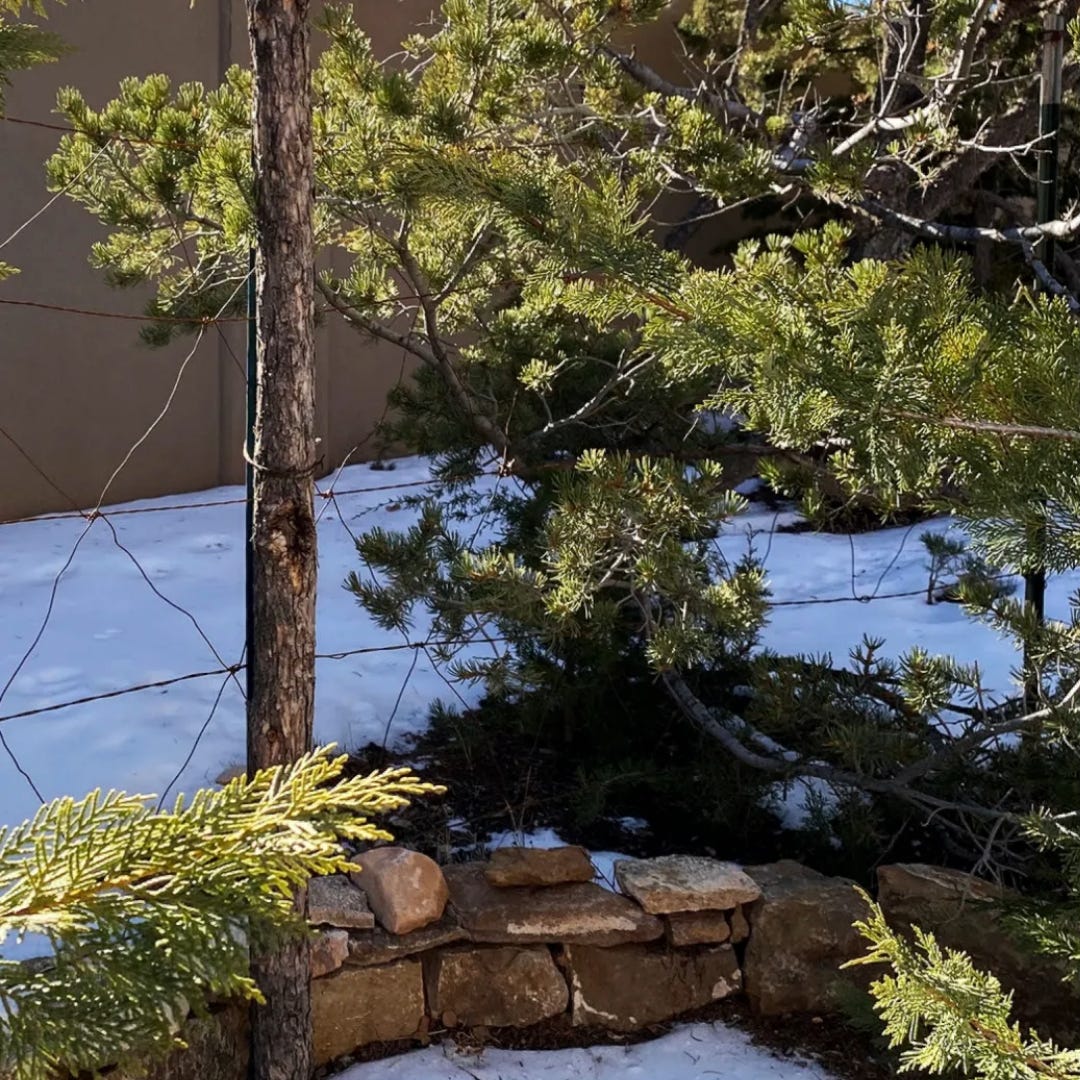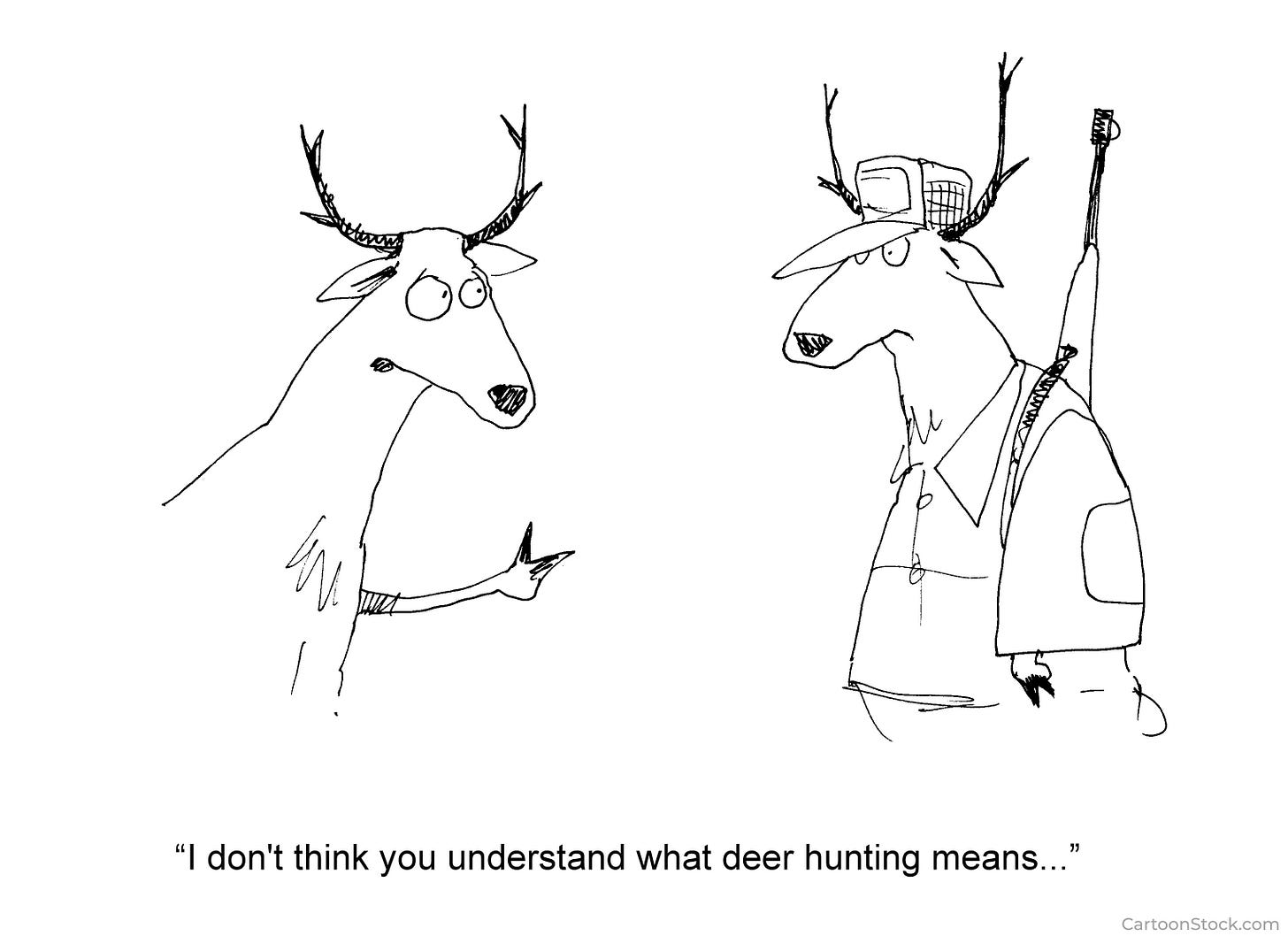5 Design Questions Answered
👉Breaking: First "10 Weekends to Wild" challenge starts now!

Dear Heather: We just moved to this house last June. I don't want to get overwhelmed. Would you suggest just starting with one or two destinations this year? — Robin, New York
Planning vs. planting — very different. I recommend you rough out the overall layout with all your destinations, then just plant what feels doable, timewise and budget wise. Keep in mind that you’ll be planting natives around the destinations, not in them. I’ll be covering planting plans and budgeting soon. In the meantime, I suggest you continue to refine your plan, starting with this week’s challenge, below. [Readers unfamiliar with the paths and destination approach Zoe and I teach in our workshop, see my last newsletter, Dream Big Now!]
Dear Heather: For urban dwellers with small lots in need of privacy from street traffic and neighbors, should you proceed first with privacy shrubs/screening enclosure before creating destinations or do so in parallel? — Courtney
Yes, both :) Develop an overall plan incorporating both screening and destinations. Then you probably want to install the privacy shrubs ASAP. And use fast-growing native species or already mature plants. If you have the resources, you could also create a simple destination — some seating surrounded by plants, for example, wherever feels most comfortable now.
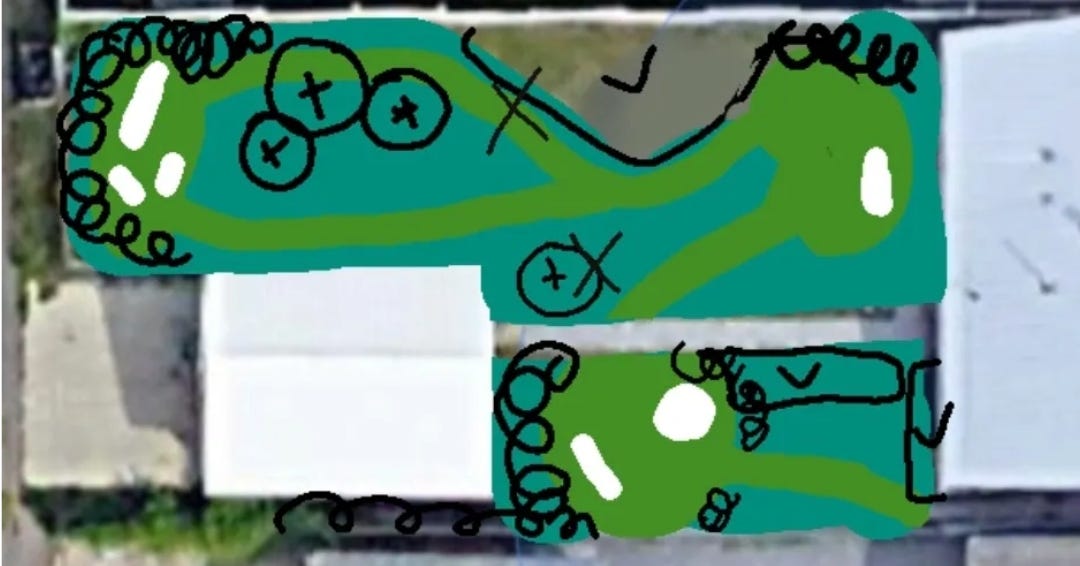
Dear Heather: I took your workshop a couple weeks ago and I got way more out of it in 1.5 hours than I thought possible. It's definitely a helpful way to think about the property that I hadn’t come across in my native landscape research. Doing it fast was key because it's so easy to get bogged down in the details for me. Also really appreciate your time management! — Monica, New York
Thank you for articulating the strengths of Design Your Yard: Quick & Easy Yard Layouts. As another participant summarized, “This is what’s missing from lawn conversion.” We’re repeating the workshop on Tuesday, March 11, at 5:30 p.m. Eastern time (details here). You’re welcome to join again – and please encourage friends to join, too. [Paying subscribers, register after the paywall below. Others, upgrade to paid ($30/year) and we’ll send you the registration information.]
Dear Heather: So what material would you use for your paths? — Rosemary, Maryland
When you’re transforming a yard that’s currently mostly lawn, we suggest the default path or destination material is turfgrass. Then plant natives everywhere else. As one workshop participant messaged me, “It’s like negative space. Revolutionary thinking for us!” The exception is when you aren’t able to maintain mown grassy areas without chemicals or irrigation.
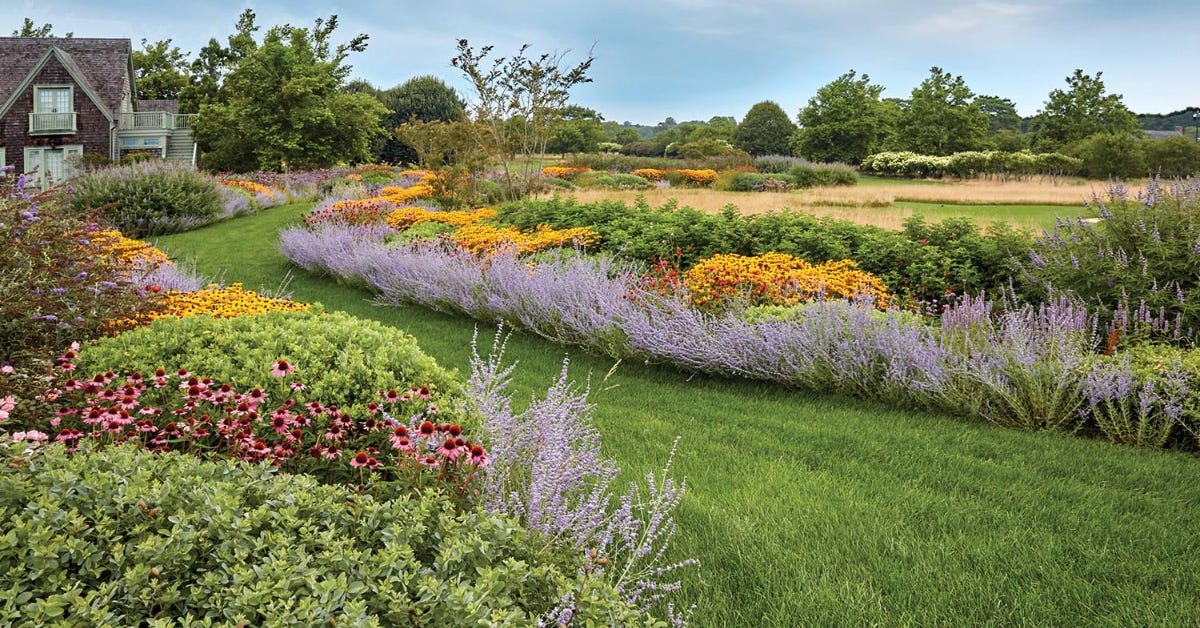
Dear Heather: Is this system of garden design to just let the existing fescue [grass] grow tall and cut pathways and destinations into it? Or should I be cold sowing some seeds out there? I don't even know if that's enough cold stratification. Yikes. — Marsha, Kansas
Letting turf grow, mowing paths and destinations, then seeding or planting into the long grass is the easiest, least expensive approach (see The Fast, Cheap Way to a Nice Enough Native Plant Landscape). In Kansas, you still have enough days of cold, moist weather to direct sow most flowering perennial species, according to Prairie Nursery’s propagation chart.
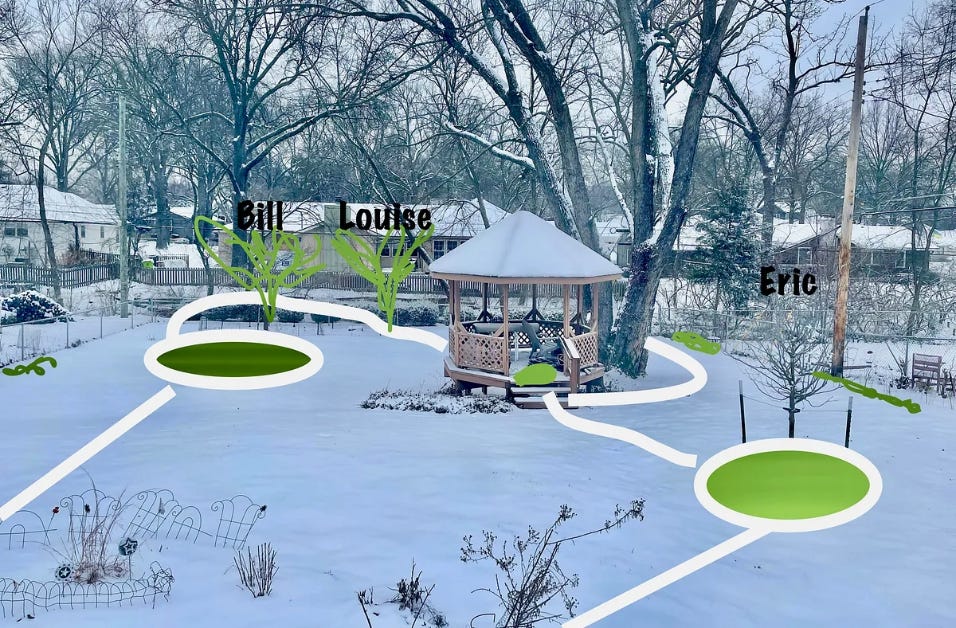
Why: Deer are a threat to health and biodiversity
In our workshop, we received yet another question about deer resistance. A study published this month in Nature suggests improved deer management may be on the horizon, because opinions about deer management are coalescing. Based on a survey of New York State residents,
We found widespread acceptance (>70%) for reducing deer populations using lethal means if doing so would reduce Lyme disease, increase forest regeneration, protect native plants and animals, and improve road safety. …
The acceptability of this approach was shared among rural and urban respondents, and was not affected by their self-identification as hunters or animal protectionists. Previous surveys did not discover this common ground, because outcome-oriented questions were not included. — Nature.com
Zoe has embraced ecological hunting to control deer. Whether or not you are interested in hunting, she recommends you join a webinar about the deer crisis by Eli Arnow, chair of Partners for Climate Action’s Forest Health Task Force, on March 11 at 8:30 a.m Eastern time. Eli will talk about why deer populations have skyrocketed and potential policy changes, long-term strategies, and actions you can take right now in your own backyard. Learn more and register free here.
Zoe and I are protecting our establishing shrubs and trees with temporary fencing during the winter and spraying them with pleasantly mint-scented Deer Out at other times. The best-looking fencing I’ve seen is Jonathan Berger’s hand-tied wire fencing pictured below; see Advice About Deer Fences and, for more strategies, Keep Your Plants Safe 🦌.
Announcing: 10 Weekends to Wild
In the next 10 newsletters, I’m going to suggest a fast, fun activity to make your yard more enjoyable (as well as more biodiverse).
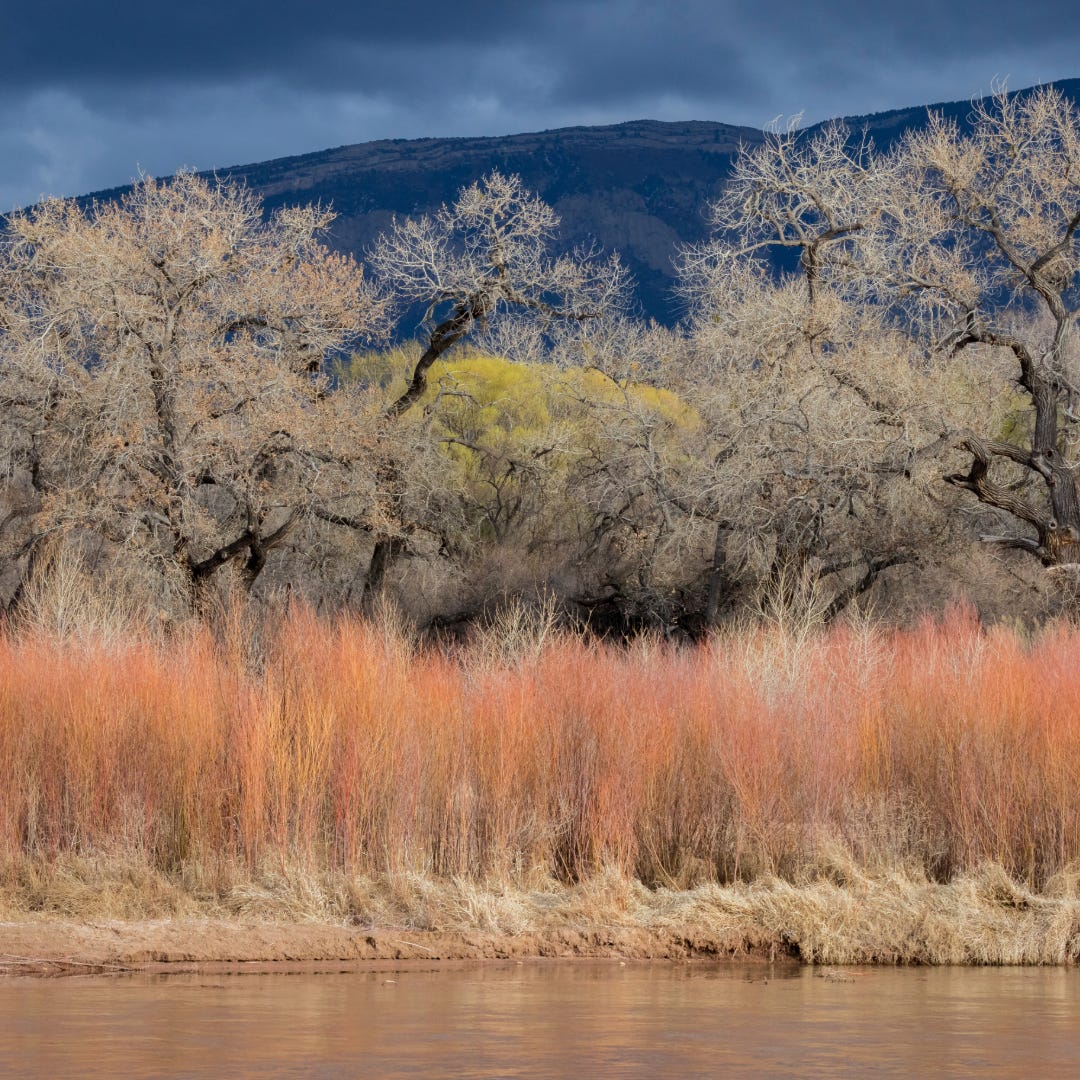
Remember recently when the entire country experienced arctic temperatures? We had unfortunately picked that week to travel from Florida to New Mexico. But it wasn’t all bad. We saw dear friends and some glorious scenery. What surprised me most was the amount of color in the wintry landscape — masses of orange coyote willows along a river, the bright white of aspen bark against ponderosa pines in the mountains. Your first “10 Weekends to Wild” challenge is to consider how to add color and interest to your home landscape.
But first, please register for our Design Your Yard: Quick & Easy Layouts workshop on March 11 at 5:30 p.m. Eastern time. It’s free with your subscription — and I believe EVERYONE should join this fun, fast-paced, super-interactive 90-minute workshop. To sign up, become a paying subscriber (just $5/month) and check your confirmation email for the registration link.
Challenge #1: Check your winter views
During winter, most of us experience our gardens through windows most of the time. Can your winter views be improved? Take 10 minutes to look out at — and snap pictures of — one to several views you see often during winter days. Imagine: What can you plant to improve these views and bring joy inside? Think in terms of number, size, shape, value (e.g., light or dark), etc.; you can decide on the species later, in consultation with your native plant nursery. Now, share a picture and your solution — and see others’ — in Substack Chat. Finally, add notes to your planting plan. (Don’t have one? Create a doc or note now.)
Planting solutions for winter views include both screening and visual interest. For example, evergreens can screen an unattractive view. Trees with bright bark — birches or poplars — add contrast and depth in front of evergreens. A single, small deciduous tree centered 15 feet in front of a window creates a focal point. For more inspiration, check out:
Design Your Wild’s 10 Attributes of a Restorative Landscape: Views (from inside) Pinterest board
From Edge of the Wood Nursery (PA), Native Plants for Winter Interest
For the Oudolf approach to winter interest, Plants that Look Great in Winter


